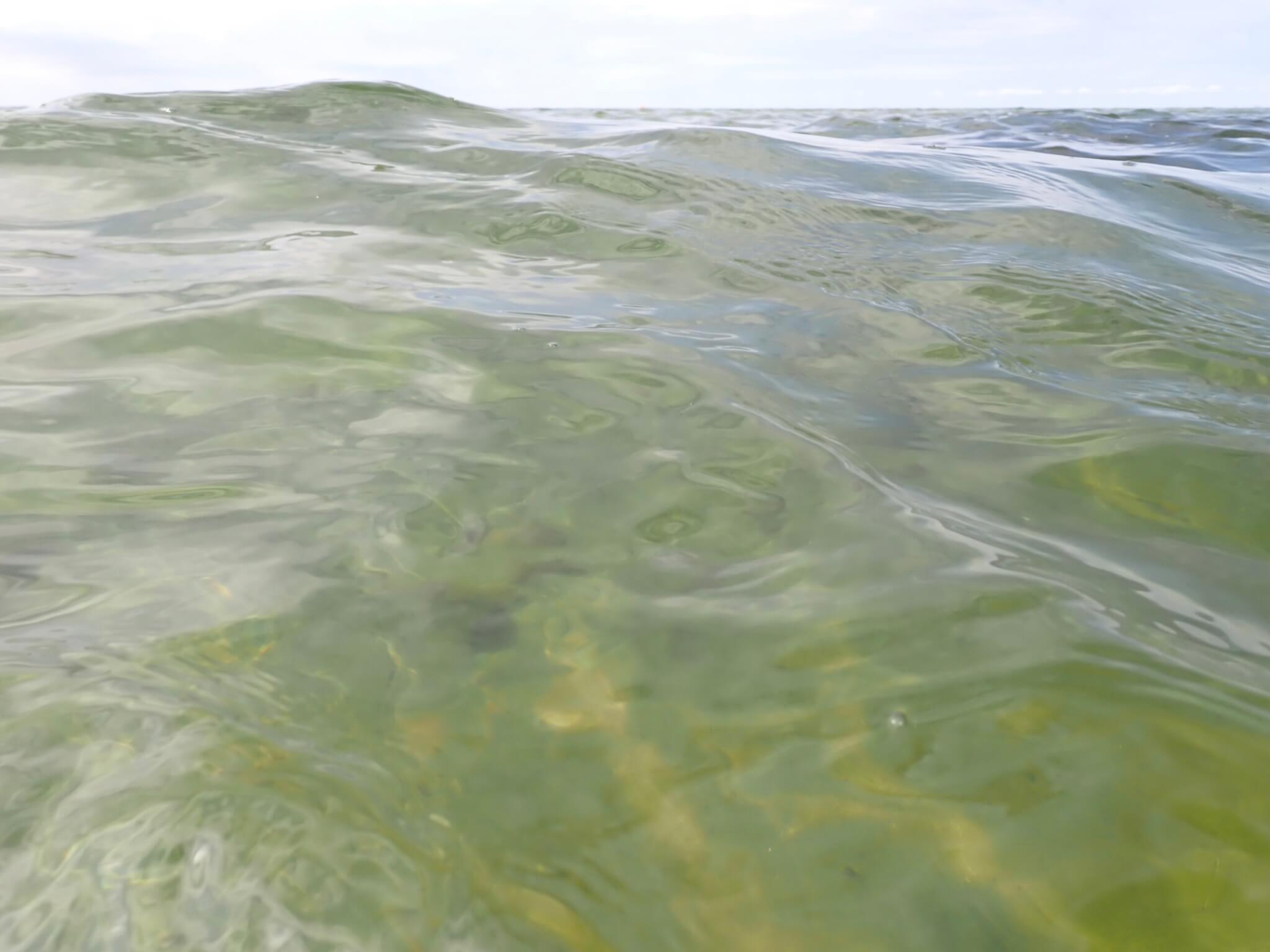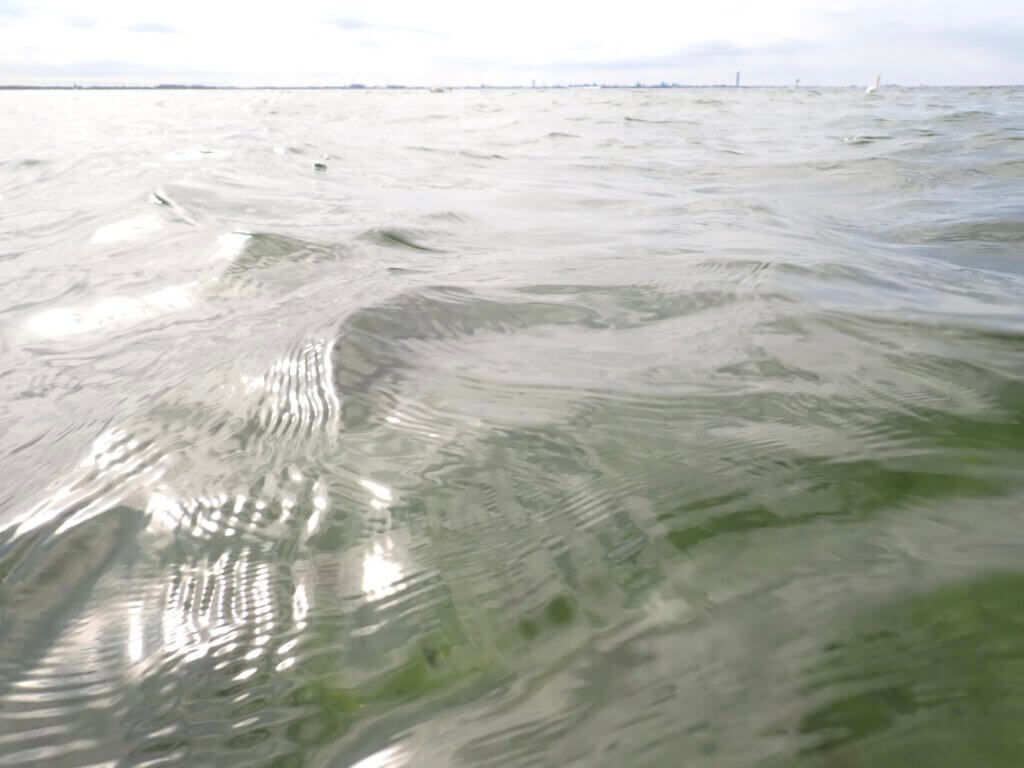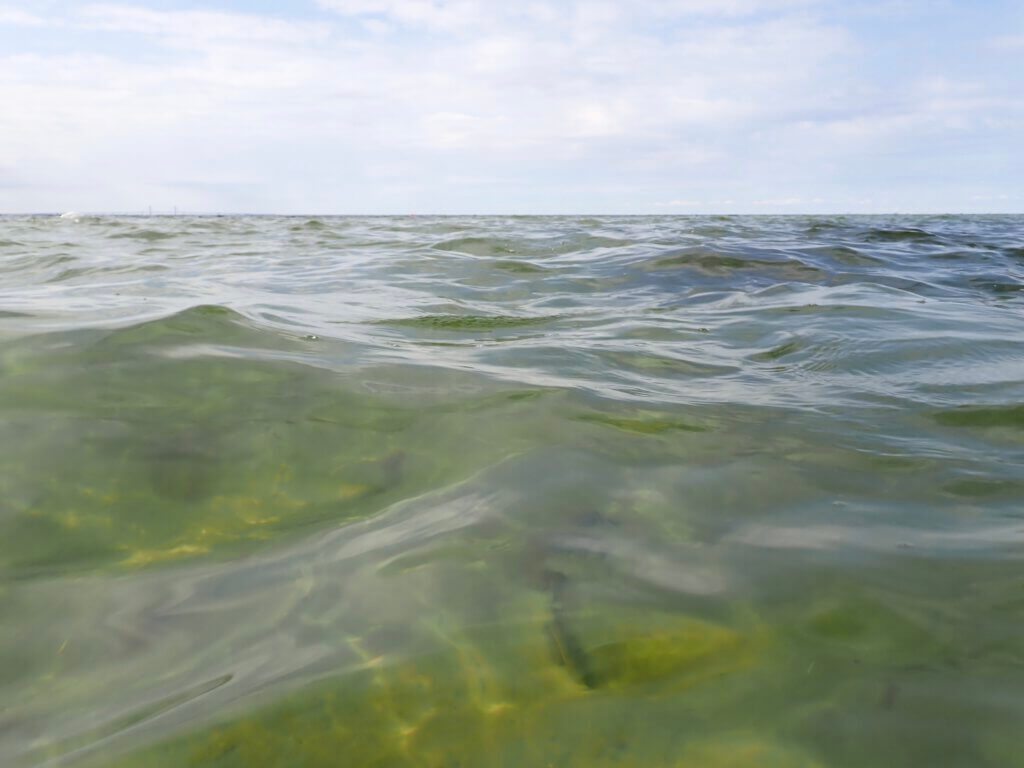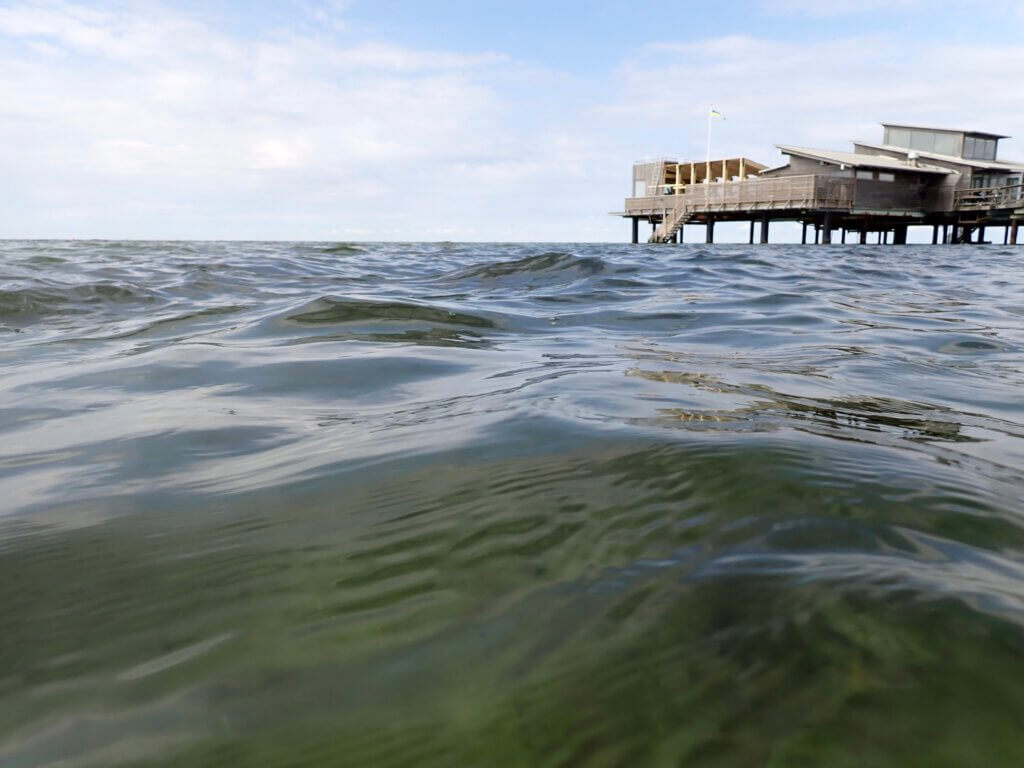
Reflections on the workshop “How to deal with climate anxiety as teachers and researchers?”
On Thursday, I was lucky enough to be invited to attend the workshop “How to deal with climate anxiety as teachers and researchers?” co-organised by the Environmental Politics Research Group (EPRG) at Lund University and the Research Group on Green Politics (REGROUP) at the University of Copenhagen, that brought together very interesting presentations, first on research on eco-emotions, and them on different ways to imagine the future and work with that in an educational context. My personal summaries of the main points below.
Marlis Wullenkord: Eco-emotions and coping strategies in educational settings
Emotions in general consist of a subjective experience, and can be expressed both in behaviour and in physiological responses. They serve to direct our attention and orient perception, and — given some degree of emotional literacy to put words to and make sense of what we are feeling — provide us with information about both our inner and the outer world. Contradictory emotions can co-exist, and there are many different strategies to cope with emotions.
Marlis is an environmental psychologist and presented an overview over her and others’ research on eco-anxiety specifically. Eco-anxiety includes emotions like anger, shame, grief, guilt, sadness, powerlessness, worry, and others. While some see it as a pathological condition that needs treatment, others see is as reasonable response to an existential threat. But in any case, eco-anxiety is very common:
- Worldwide, 80% of young people report feeling at least moderately worried about climate change. This is highest for women, indigenous populations, people from the global south. 45% of young people worldwide report that the worries have impact on functioning, for example causing trouble sleeping or dealing with social situations.
- For Swedish highschool students, worry levels significantly increased from 2010 to 2020. Worries are highest when thinking about future generations, animals and nature, and people in poor countries, and not as high relating to oneself or friends and family. But preliminary data from this year and last year indicates that the worry levels might now be back to values comparable to 2010. Maybe because the Greta-wave is over? Or because kids these days have to worry about so much other stuff, too?
- For German adults, a study investigated climate anxiety in terms of thoughts and emotions, and impairment. While there are people that score high or low on all, for part of the population there is a disconnect where they score high on thoughts and emotions, but low on impairment, so that would be an interesting population to investigate coping strategies! Generally, younger people tend to be more anxious (more impacted in the long run combined with less influence over their future because of roles and representation, and “more vulnerable to social construction to silence” — see also my interpretation of the Spiral of Silence, I believe that is a very real problem!), and women are more likely to be anxious. But interestingly, the most impaired group tends to be male (possibly because expressing emotions and coping with emotions is very gendered — men generally have less access to validating contexts for support?)! But the study also finds that the most impaired are at the same time the most connected with nature, so “connecting with nature” does not seem to work as a coping strategy.
Side note: What I find really interesting is that there seems to be no real understanding yet regarding the stability of emotions. All the numbers above come from quantitative measures and are snapshots in time. But Marlis talked about a study where some of the “don’t really care” people were interviewed over several weeks, and it turned out that they were actually strongly concerned, but weren’t aware, or unwilling or unable to express it, during the initial quantitative survey. So it’s probably good to take all of this with a grain of salt…
But about coping efforts and strategies to manage stressful experiences: They can be focussed on coping with the actual emotion, on dealing with the problem that is causing the emotion, or with finding meaning behind the emotions.
A different study investigated the influence of mindfulness and integrative emotion regulation. They found that awareness and accepting of emotions are buffers that can keep anxiety from turning into an impairment, but they found no relation to activism (e.g. signing a partition, occupying an airport; the study didn’t look at private sphere actions how participants’ own behaviour influences carbon footprint etc). On the other hand, integration of emotion (I feel anxious, I am aware of it) into the sense of self (what does it mean about me, about the world, what can I do with that?) makes people more likely to lead activism, but there is no relation with impairment.
An interesting question by a participant was then about “mindfulness — isn’t that about feeling emotions and letting them go, becoming aware and accepting of powerlessness, rather than doing something with the emotions?” Of course, there are tons of different conceptualisations of mindfulness so it is difficult to say something general here, but this fits with my perception of the type of yoga retreats on Bali that promise participants a sustainable life in themselves in paradise, while ignoring the world on fire around them… The kind of “patient hope” / “false hope” that I ranted about earlier. Anyway, moving on…
One result from many studies was that talking about uncomfortable emotions is really important. In a study from Sweden, 75% of respondents report talking about climate change more than once a month, 40% once a week or more. In that same study, 1/3rd of the participants reports talking about their emotions in at least half of their conversations, 1/4 almost never. But talking is related to more anxiety and more emotions, and that to more pro-environmental actions. And interestingly, experiencing empathy when talking about climate anxiety enables pro-environmental action further. So, as Marlis suggests, empathy training might be a possible intervention method. In any case, emotional literacy, being able to name your emotions, seems to help with mental health. So we should encourage emotional expression and meet them in others with empathy!
What is really not helping, though, is distancing oneself from climate anxiety, for example because of wanting to be objective and look at facts (like many teachers still teach — and, concerningly, this one correlates with weaker tendencies for collective action and policy support!), or because expressing anxiety is discouraged (again, as many teachers still teach), or because people avoid thinking about climate in everyday life. The latter two are actually correlated with higher impairment!
But there is also positive distancing: taking breaks, slowing down with purpose (as in my favourite everyday changemaker book). Marlis showed Klimatpsykologerna’s “ice cream image”: three scoops of ice cream, “take breaks”, “act together”, “cope with emotions” rest embedded in a cup of “social support and community”.
So where do we go from here?
Emotional awareness is critical, and Marlis recommends to integrate emotional literacy tools in teacher training (btw, klimatpsykologerna also have a cool method data base [in Swedish]), give teachers time and resources, and to create space for institutional discussions and policies on how to confront climate anxiety. She says that “anxiety is often about inactivity of powerful actors” (my emphasis, because that resonated with me so much). Powerful institutions, like universities, should acknowledge their responsibility, act in responsible ways, and in that way help fight the problem directly, while also reduce anxiety by showing that they are taking the problem seriously and are doing something about it. And — sidenote — this signal is not only important for people that struggle with climate anxiety — there is also the other end of the spectrum where the paradigm that universities are institutions of rationality keeps them from taking the problem seriously themselves (because if it was really such a big deal, wouldn’t there be rules in place that I need to learn about it and include it in my teaching, since as a rational place, universities are probably as close to perfect as it gets?). So even more important that universities take action!
Anyway, Marlis shared some advice for teachers: Work to increase your own, and your students’, emotional literacy. What are emotions for? What can they tell us? How can we work with them? And she shared that in a study, even 8-year-olds say that they would rather be told the truth than white lies. So put trust in your students, be truthful about “the facts” but also about how they personally affect you. Leaving things out, or making them sound less scary, is not the way forward!
Lastly, Terese shared a piece of advice that Steven has taught us for dealing with climate anxiety: give space for and validate the emotions, embody them (for example through art), and then encourage action!
Johannes Stripple: Environmental futuring as pedagogical tool
Why isn’t there more political will to work towards sustainability? Why can’t we even imagine things being different? (We experienced just how difficult it is to create a real vision of the world when that was the task we had set ourselves to the second book club meeting on my favourite Becoming an Everyday Changemaker…). At the same time, “2.5 degree world” or similar descriptions of the future don’t really tell us what living in that future would be like, they don’t draw us in the same way that lego or stories would. So in his presentation, Johannes introduced us to “futuring” as a pedagogical tool.
Since the future isn’t pre-determined but constantly being shaped, imagining the future, futuring, is not not neutral, either. It involves a lot of choices for how things should be, and that is based in what we value. Futures can empower or disempower, depending on how they are constructed and who with. And if we try to illustrate possible futures through sound and drama, it makes it easier to identify with it, to create emotional connections, but also to illustrate conflicts and choices. Sound evokes inner images, activates memories, emotions, … So futuring can help us opening up futures to explore what could be rather than analysing what is.
Johannes presented “climaginaries“, a platform for exploring fossil-free futures and ways to get there. One example are travel guides like “welcome to skåne“, which presents different regions in a zero-carbon future. An other example are soundwalks, which can be done either in specific places, like in Hyllie, Malmö, for “memories from the transition“, or at any outdoor space with water, preferably on a beach, like “Farewell Falsterbo“, which tells the story of a flood 50 years from now and discussions about why the community had let it go this far. While some of these tools are used in education, they are actually designed to be used more broadly (and apparently are used a lot, too). I generally have difficulties with letting myself be pulled into narratives that are too fictional, but especially the last one I want to try!
Johannes says that “we face not just a crisis of climate but also of imagination”, and futuring can help us explore and rehearse other ways of being. Imaginative journeys are starting points for conversations and connect knowledge with emotion, place, and action.
Lisette van Beek: Mixed-classroom (20 students & 20 practitioners)
Next, Lisette presented a really interesting example from teaching practice in Utrecht. In the course she taught in 2023, they combined 20 students and 20 practitioners (mostly policy makers, but also activists!) in a course on “just transitions” to learn together and discover other ways to engage with the future; to discover agency instead of passively being overrolled.
In this course, the classroom became a fictional social movement, starting out with Lisette on a soap box in the first session, talking about how “remember last year when we did…?” and causing some confusion with that convincing dramaturgy that put people in the context of already being in the movement. But this setting was great to experiment with new roles, new ways of understanding transitions and especially just transitions, and dreaming up creative interventions to mobilise action.
So was it a transformative learning experience?
- For students: they got to discuss policy making practice with practitioners. How does it actually work, what are the actual struggles why are things not changing? They also got to creatively imagine possible futures, experience a sense of agency in transformations, and gain confidence.
- For practitioners: as “fellow travellers” in 6 meetings, they were confronted with new perspectives and could reflect on their daily practice (many of them working in energy transition). The discussions with students opened up new possibilities.
- Both: opening up visions of sustainability futures!
Of course, there were some challenges in the implementations: interactions (hierarchy hard to break, different time investment/high workload), many and diverse ILOs, balancing clear structure and openness, high skill requirement from teacher (standing on soap box, leading the movement)! But it sounds like such an inspiring course, and I would love to try combining students and practitioners in one course!
Michele Betsill: Imagining hopeful futures (using the “Carbon Ruins” virtual exhibition)
As a fun end of this workshop, Michele showed us how she works with a “field trip” to the virtual “carbon ruins” exhibition (which exists as actual physical exhibition, but also as trunk and as suitcase miniature versions!). First, she guided us through an imagined time travel 50 years into the future. Then, we were invited to pick an exhibit from the exhibition (check it out!) and read through the information given on it. The exhibition contains artefacts from the carbon era — frequent flyer cards, nylon stockings, single family homes, concrete cores, legos, and for all of them, there is a narrative of how people came to stop using it. We discussed the artefacts we had picked and identified which events and mechanisms led to change, and then it was time to write our own little story about something we saw on the table and how, in 50 years, we will have stopped using it!
In my group, we picked the single-use paper cup: “No more (single-use) cups in the world!” During the World Cup 2026, a study about the harmful coating of paper cups was published at LU.. Since it coincided with the World Cup and was titled “no more cups in the world”, it got a lot of attention and LU decided to stop using single-used paper cups. Instead, they installed larger kitchens in their conference venues, where doing the dishes together quickly became an activity enjoyed by most, to catch up on gossip, unwind after conferences, discuss the implications of new ideas. Since there was also always loud music playing and great energy in the room, these kitchens quickly were called “diskho” (play on words with disco and the Swedish work for kitchen sink…), and the concept spread over the whole world. And that was the end of the paper cup.
Writing that story was actually fun, and it became clear very quickly that I was working with an expert in writing these types of stories who was thinking not just about an interesting story, but about what mechanisms, tipping points, etc we could consider to invent a scenario that was actually plausible(ish). And I can very well imagine working with this virtual exhibition also in other context, and it was pretty impressive that we could run this whole demo workshop in about 3o minutes!
These were my notes from the workshop.
In other news, here is some wave watching from Saturday’s dip! I absolutely love the groups of capillary waves creating these delicate pattern!

See the faint outline of Öresund brige on the horizon?

At steep angles, we can look into the green water, at shallow angles we only see the reflection of the sky…

A lot of construction going on at Långabryggan…
